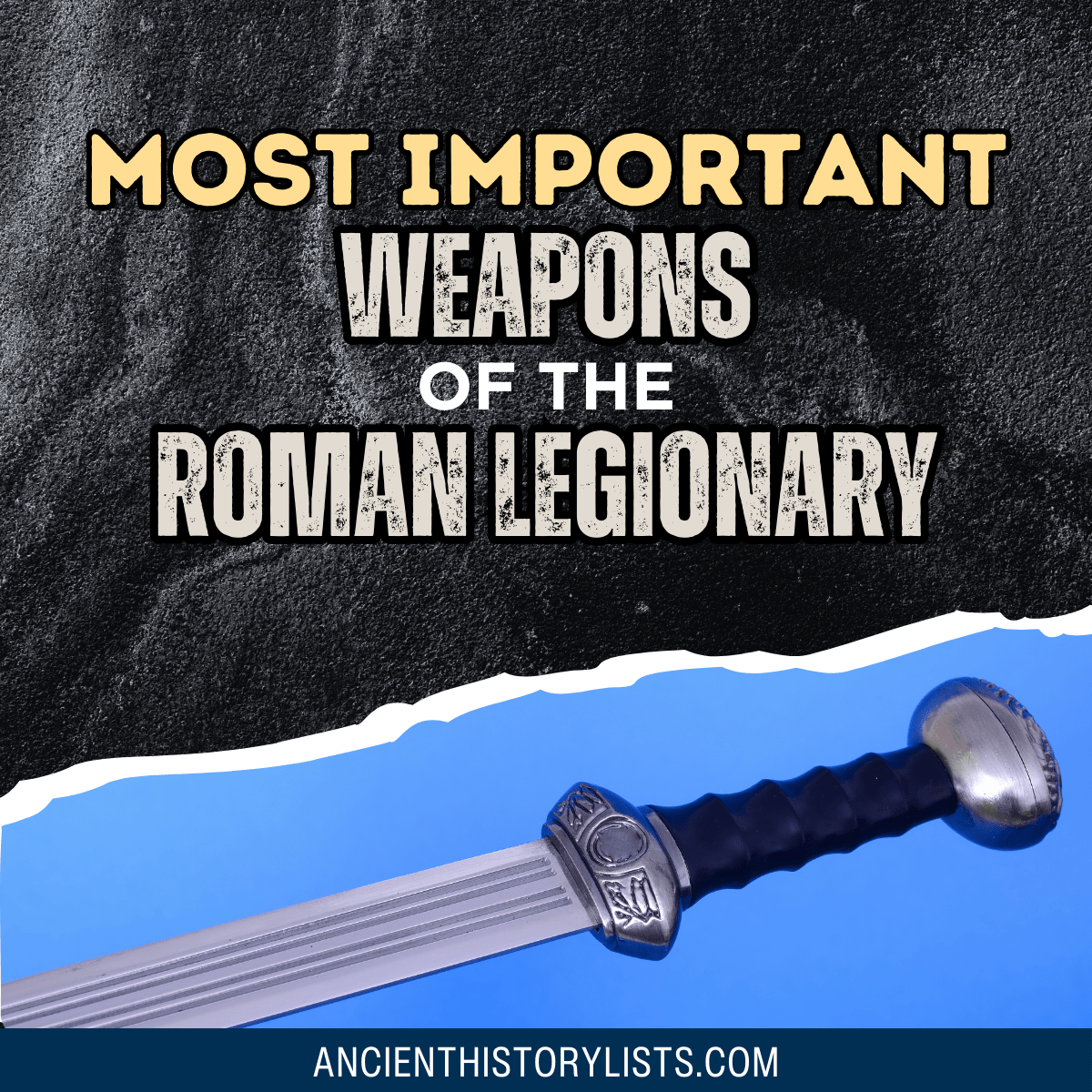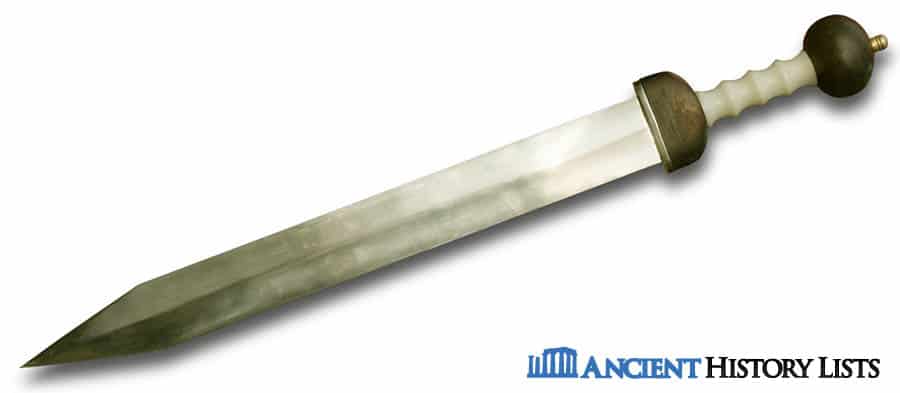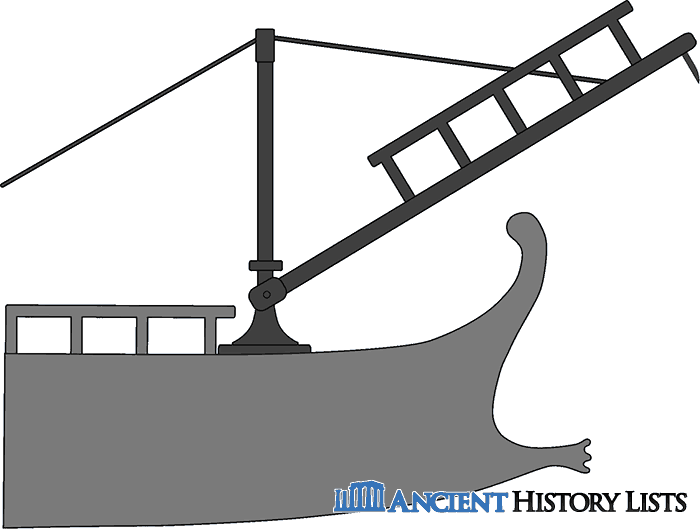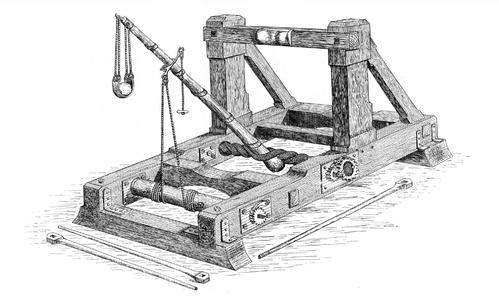The Roman military was instrumental in making the Roman Empire great. In many ways, it was the reason that a small city on the Italian landmass gained control over the greater part of the Western world, from the British Isles to the Near East, from the Rhine to North Africa.
In the early days of the Roman Republic, the military was a volunteer force made up of Roman civilians. All Roman citizens could serve in the military, but as the empire grew and spread out, the army had to recruit more and more from the local population.

Potential recruits were required to commit to a specific length of service, and a significant number of them were not Roman residents. As the borders of Rome expanded, so the military needed to depend on men from these newly acquired Roman areas to serve. The main prerequisite was that they were free natives.
At first, soldiers used weapons based on Greek and Etruscan models, and once they had encountered the Celts, they put together a new collection of weapons based on those used by their new enemy. To crush the Carthaginians, they developed a whole arsenal of weapons based on the Carthaginian model. Many of these new weapons became standard and gave the Romans a distinct advantage over their enemies.
The three primary weapons utilized by Roman officers were the pilum, the gladius, and the pugio, but Roman armor also played an important part.
1. The Gladius

An important Roman weapon was the gladius, or short sword, which was around 18 inches (46 cm) in length and sharpened on both sides. This was often used for close combat.
The gladius was made from several strips of metal joined together, although some were made from single pieces of steel. The gladius was ruthlessly effective as most ancient battles broke down into a riotous scrum where the gladius made its mark.
In the late second and third century AD, the gladius was replaced by the spatha, a longer sword with sharp edges of between 24 and 33 inches (60 and 85cm).
2. The Pugio
The pugio is synonymous with status and often associated with high-ranking officers; it was famously used to kill Julius Caesar. Being in the military was an honor for a Roman citizen and wearing a pugio was the simplest way to let everyone know.
The pugio was a small knife, between seven and eleven inches long, and was used as a last resort if no other weapon was available. Its sharp edge had a focal rib, and the handle was typically bolted on (although these bolts disappeared from the first century AD and numerous later precedents are found with substitution handles).
The pugio went through many different designs, and it was less common during the second century. However, it returned in the third century with a more extended cutting edge.
3. The Pilum
While the pugio and gladius were often used for close combat, the Roman legionary had another weapon at its disposal for more long-range use: the pilum, a substantial throwing lance.
The pilum was a long, lightweight spear approximately seven feet long with an iron spike toward the end of the long wooden shaft. Weighing anything from 4.4lbs (2 kg) upwards, the pilum was intended to be thrown, and its accuracy was key to its success.
The pilum replaced the hasta and was itself replaced by the speculum, a somewhat shorter variation, after 250 AD.
4. The Corvus

The corvus was a Roman naval boarding device used during sea battles against Carthage during the First Punic War (264–241 BC). The Carthaginians were known for their superiority in maritime warfare, probably due to the battles they had been fighting in order to conquer settlements overseas for many hundreds of years.
It was the sheer inventiveness of the Roman armed forces that enabled Rome to triumph over Carthage, although the corvus was not without its disadvantages. It could not be used during rough weather, and its presence on the prow of the ship may have hampered the navigation of the vessel. The Romans soon learnt new maritime fighting techniques and were able to dispense with the corvus altogether.
5. The Onager

While ballistae, or bolt throwers, were commonly used as weapons by the Romans, they also used heavier mounted gun frameworks that could use rocks as missiles to bring down walls and small fortresses. The onager (named after the wild ass because of its kick) was a kind of sling.
It consisted of a large frame with a sling attached to the front end. The sling was used to hold projectiles that could be fired by forcing the arm of the sling down against the tension of twisted ropes or springs. The speed and distance of the projectile depended on the wind and the terrain.
Ammianus Marcellinus, a fourth-century Roman officer and historian said of the onager:
“The scorpion, which is currently called the wild ass, has the accompanying structure. These are attached like a saw and drilled through on the two sides with large gaps. Before the arm is set, a pad of material is weighted down, bound with strings, and placed on a pile of turf or a heap of sun-dried blocks. This machine is so effective that it can destroy everything in its path.”
6. The Plumbata

These small, lead-weighted darts were carried by every soldier – usually five of them in the hollow of his shield. They are named after the martiobarbuli which means “little thorns of Mars” and were mentioned by the contemporary writer Vegetius in his De re militari around late fourth century AD.
The plumbata were used in place of archers in the Roman legions and often ensured that the enemy troops and their horses were wounded long before they reached the Roman army and engaged in direct combat.
8. The Carroballista
While the basic ballista was (presumably) created by the ancient Greeks, there is no doubt that the Romans took this machine and adapted it for their own use on the battlefield. The carroballista was developed from the earlier manuballista. However, its distinction lay in its maneuverability. Fundamentally, the weapon was created as a truck-mounted ballista to carry versatile field weapons.
The weighted springs were made of iron and had leather covers to protect them from enemy fire and the weather. To shoot, one man turned the winch to move back the slider and rope, while another held it steady and placed a bolt on the slider, allowing the first man to pull the trigger.
This two-person version was used in the Dacian Wars during the first century AD.
9. The Spatha
The spatha was a type of long, straight sword used by gladiators and soldiers. In the first century, Roman auxiliary soldiers began to use these longer swords in the Roman territories, and in the late second or mid-third century, the Roman heavy infantry also began to use them. The longer length of the spatha over previous weapons such as the gladius allowed frontline soldiers more reach when thrusting.
A vast third-century haul of these weapons has been found in Künzing, Germany, which includes one triangular-bladed short sword and several thin-bladed short swords with sharp edges measuring between 23 and 39cm.
10. The Lorica Segmentata

Lorica segmentata was a kind of protective body armor mainly used in the early Roman Empire. Its Latin name was first recorded in the 16th century BC, but its origin is obscure.
The armor was made of wide iron strips called “girth hoops” affixed to inner leather strips. The strips ran horizontal to the body and were attached at the front and back by metal clasps and leather straps. The chest area and shoulders were protected by extra strips or shoulder guards, and breast and backplates. The design of the armor allowed it to be stored neatly since it could be separated into four segments.
A hybrid version of the lorica segmentata can be seen on a statue at Alba Julia in Romania, where the shoulders are protected with an extra layer and the central bands are fewer in number.
The earliest proof of the lorica segmentata being worn is around 9 BC although this was a very basic version. The most recognizable version is thought to date from the second century AD and has been found in numerous locations such as Britain and Spain.
This type of body armor fell into disuse when the infantry was replaced by mounted troops.